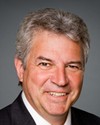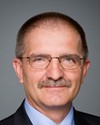Thank you for inviting me.
It came as a bit of a surprise to be asked to give a presentation. I wasn't aware that I had to give an introduction, but I've made a few notes, and I just hope that's okay. If you have problems with it, please indicate and I'll clear it up.
I'm a toxicologist. I have a Ph.D. in medicine from the University of London. Following my Ph.D., I worked for 13 years for the National Radiological Protection Board in the U.K., where I studied toxicity and behaviour in the body of materials that deposit in the skeleton. That's most metals, including uranium, radium, plutonium, and all sorts of things like this.
I then for ten years was head of biomedical research at the United Kingdom atomic energy establishment at Harwell, which is the sister organization to where I work now, at Chalk River. It was started by the same people at the same time.
Then we had a reorganization, and the organization was effectively broken up. I left the UKAEA—or AEA Technology, as it was called then—and moved to a university chair in London, where I was a professor of environmental toxicology.
In 2007 I was approached by AECL in Canada and asked to come over and look after biological research at Chalk River Laboratories. I readily agreed, because after 10 years in the university, that was enough.
I think Joe Oliver is meant to give a talk, perhaps even this week, on the future of the Chalk River laboratory. I just hope that I don't get caught, the second time in my life, when a laboratory is broken up.... Never mind.
So I came out here and subsequently picked up additional responsibilities for radiation dose symmetry at Chalk River and also for environmental technologies.
In the context of my experience with uranium, which I guess is the major issue here, it started at the NRPB, where I undertook studies on the way in which uranium behaves in the body and also on the toxicity of uranium—specifically, forms of uranium that are radioactive, or the opposite end of the spectrum to depleted uranium, if you want to put it that way.
I also was asked by the BBC to go with them to do a two-week investigation of depleted uranium exposures in the Balkans. I was in both Bosnia and Kosovo collecting urine samples from the general population, bringing the samples back to the U.K., and then using the technique, an isotopic technique, to detect depleted uranium in the residents living there.
I found a very small amount. The amount of natural uranium they were excreting was larger, but about 20% of the uranium they were excreting at that time, which wasn't very long after the war, gave a signature that suggested it was depleted uranium.
I was invited back by the German army a couple of years later. I went back with them to Kosovo, and this time to Serbia. When I was in Kosovo, I went back to the original people I had measured and took more samples from them. I found that now there was no indication of any depleted uranium excretion in the population whatsoever, which to me indicated that the people had a small continuous exposure after the war and that they didn't have a significant body burden of uranium; otherwise, it would have been excreted when I went back the second time.
I was asked in 2001 to write a review for The Lancet, which I did, on the toxicity of uranium. I was asked as a consultant, or asked basically as an agent provocateur, to sort of criticize evidence that was being provided to the Royal Society in their review of depleted uranium following the Iraq war, the Gulf wars.
I was a member of the U.K. Ministry of Defence depleted uranium research review group, and the IAEA asked me to go out on a field expedition to Iraq to look at the situation with regard to depleted uranium. That never came up, because the security position in Iraq was always such that the mission couldn't be undertaken.
In the context of this report, I was approached by Pierre Morisset and asked if I would be prepared to review the report. I agreed only too happily. I reviewed it. I made some comments, most of which were picked up. So as far as you're concerned, then, I have no problem agreeing with the conclusions of that report.
Thanks.











